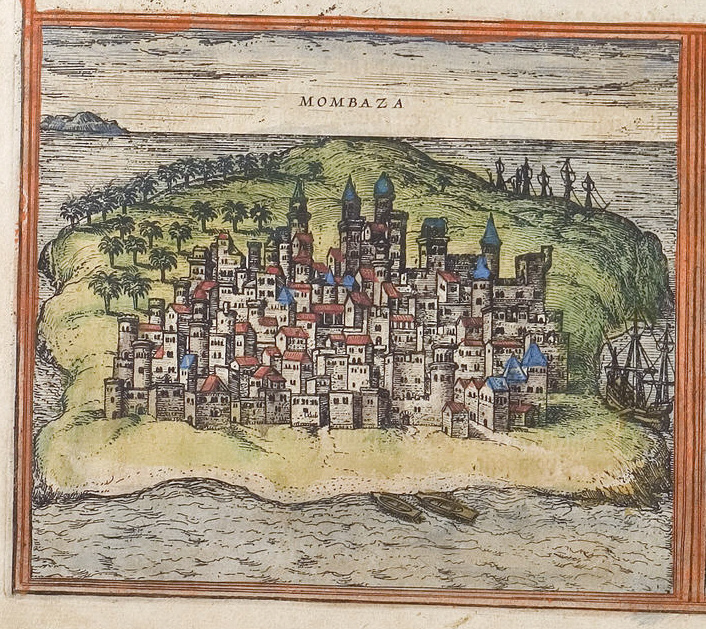In 1505, backed by 1,000+ hired Mijikenda archers from the mainland, Mombasa under its Sultan and people refused to bow to Francisco de Almeida, Portuguese Viceroy of the Indies. The city proclaims “the warriors of Mombasa are not the hens of Kilwa” but ultimately falls.

At the start of the 16th Century, Indian Ocean supremacy was contested by the Portuguese and the Mamluk Sultanate of Egypt (1250-1517). ‘Mamluk’ means one who is owned. The Sultanate had the Sultan heading a military caste of slave soldiers, the Mamluk (Mamluki in Kiswahili). The Mamluk Sultanate had no qualms with the Portuguese and their sea exploration until it reflected in their dwindling treasury coffers. The Portuguese slow but sure grasp of the pepper trade in Calicut, India and disrupting Muslim pilgrim traffic deprived them revenue from customs.
Forwarding their complaints to Pope Julius II, the Mamluk Sultanate threatened to mete out similar harsh treatment to Christian pilgrims to the Holy Land as the Portuguese were meting out to Muslim pilgrims, unless the Pope intervened. The Portuguese knew of Mamluk naval strength that could almost rival theirs even as a lone entity. The message to the Pope was a signal to a pending Red Sea coalition to drive them out of the Indian Ocean. They had to act. Kilwa and Mombasa were unfortunate to be in their plans.
By order of King Manuel I of Portugal, the 7th India Armada (fleet) was assembled under Francisco de Almeida to establish dominance on the Indian Ocean via building fortresses at critical points and reducing any local threats, Mombasa was a rival to Portuguese-friendly Malindi. Kilwa fell to the Portuguese in July 1505. On reaching the island and firing a gun in salute, Almeida received no response to the courtesy. He launched an attack that saw the ruler of Kilwa flee. They imposed a new ruler and set about building the first fort on the East African coast. The news reached Mombasa & the Sultan prepared for an oncoming onslaught. He hired 1000+ Mijikenda archers, in those years referred as the ’Muzungulos/Muzungulos’ by the Portuguese, before being later known as ‘Wanyika’. Payment for the archer services was pieces of fine cloth.
Portuguese records of the time portray the Mijikenda arrows as carrying poison made by ‘boiling the fruit of the oil palm tree’ and causing immediate death by causing blood not to flow in the body. Also, that the poison had no antidote. Declining Almeida’s offer of peace in return for tribute to Portugal, the Sultan declared “the warriors of Mombasa are not the hens of Kilwa”. What followed was a fierce fight in the “narrow streets of the city”, poisoned arrows, stones from rooftops against Portuguese guns.
The gun ultimately prevailed and much of the city was torched. Scores of Mombasa residents and some of the hired Mijikenda archers died. The Sultan escaped with some Mijikenda archers and his survivors through the palm trees that covered the city. 5 of Almeida’s men also died. 200+ Mombasa residents were taken as slaves. The city was under attack twice more by the Portuguese before Fort Jesus was built. It is not for lack of spirit or a unified front that Mombasa fell in its history but by being against a better-equipped enemy.
Sources; ‘The Muzungulos of Mombasa’, James Kirkman…’7th Portuguese India Armada’.
SUPPORT: We are a non-funded entity kept alive solely by our readers’ thirst for the undocumented and not adequately documented aspects of our past. The logistics of getting these stories can sometimes be a challenge. We would appreciate your support. To support Pwani Tribune’s history and culture research plus content creation…M-PESA till number: 8627478 Contact: +254726860693


